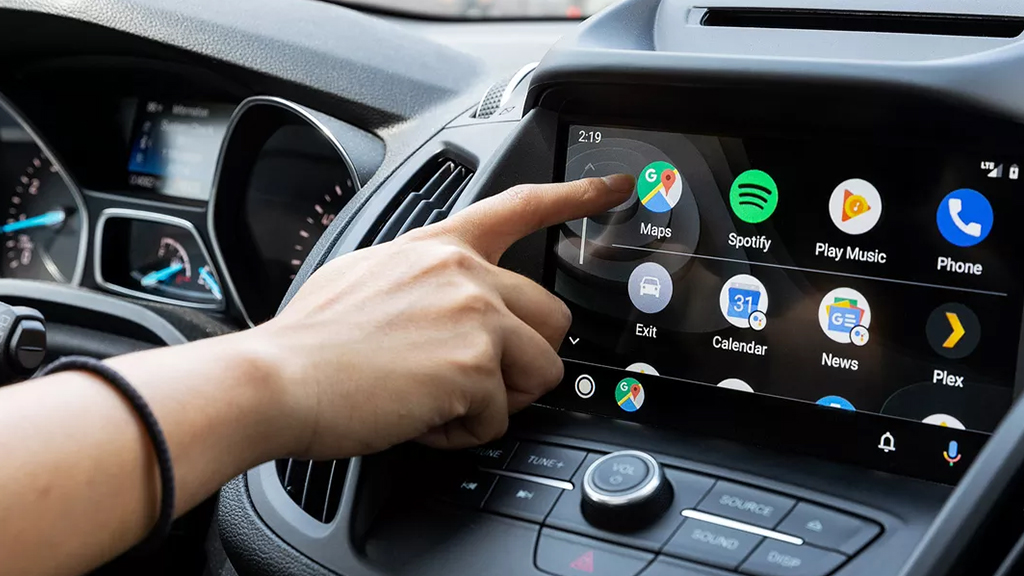Don't miss the chance to work with top 1% of developers.
Sign Up Now and Get FREE CTO-level Consultation.
Confused about your business model?
Request a FREE Business Plan.
Lyft vs Uber: Who Is Winning the Ride-Sharing Battle?
Table of contents

The title of the article “Lyft vs Uber” put several questions in the minds of budding entrepreneurs planning to enter the ride-hailing industry. Some of them are:
Funky Mustaches or Classy Cabs?
Global Ambitions or Local Markets?
A Friendly Approach or A “YES Sir” Approach?
Ahh! It is very difficult to answer which path you should follow – Lyft’s or Uber’s – to taste the triumph of success in the ride-hailing industry. While one is a global leader, the other one is the king of hearts in local markets. To find out whose path will lead you to success, I have compared both of them against several factors in this article. And the conclusion will help you find out their best and worst approaches to make the one for your business.
But before we get into the comparison of Lyft vs Uber – Let’s find out what exactly is Uber and Lyft.
What is Uber and What is Lyft?
Uber and Lyft are the two taxi booking applications that dominate in many urban communities. You must have heard about them in the headlines since they are continuing to disrupt the traditional taxi industry using strategies that are both – aggressive and innovative. The sole focus of these apps is to build a strong user base and workforces of independent drivers.
Uber was founded in the year 2009 while Lyft made its debut after three years in 2012. Both services have robust iOS and Android apps that act as an interface between users who want to ride in style and drivers who are looking for additional income.
While there are a lot of applications that empower you to hail authorized cabs, Lyft and Uber are different because of playing havoc in the taxi industry.
If you want to know how Uber – the leader of all On-Demand Taxi App works and bring money to the table – head to our comprehensive blog on Uber Business and Revenue Model here.
Or
If you want to know how Lyft – the most loved on-demand taxi-hailing app in the US work and bring money to the table – check out a Deep Analysis of Lyft Business and Revenue Model here.
Now that you know what these apps are and all about how they work – let’s compare both of them against several factors to find out their best strategies.
Lyft vs Uber: Which is the Best Ride-Hailing App?
While basically both Uber, as well as Lyft, are the platforms to match drivers with riders, the two differentiates themselves in more than one way. And when it comes to differences, Uber is the greater company, which implies that it is operating in many more states (and nations) than Lyft. The following sections will compare and contrast Uber and Lyft in detail.
1. Lyft vs Uber: The Business Model
Because of the evident similarities in business and revenue models of these ride-hailing apps, they are fighting a great strategic war with various battles to be won. Here is how their business model differs:
In Terms of Customer Segment
While the value proposition of both companies is quite similar, their customer segment varies. Uber caters to people who are professional and seem to be more business-centric. On the other hand, lyft’s customer segment is people who are searching for a friend with a car.
Lyft strives to create a personable and friendly culture between riders and drivers whereas Uber is for professionals who want to ride with a class.
In Terms of Ambitions
The talk about the Goals of both these leaders is a bit complicated. At first sight, it is hard to believe that Lyft and Uber’s business and goals are poles apart – but, yes, that’s true. Here ‘s why:
- Uber’s goals are “Horizontal” going beyond ride-hailing into freight, food-delivery, air taxis, and driverless cars. To explain its varied ambitions, the representatives of the company openly compared it many times with Amazon – which was started with selling books before expanding its services to be a full-fledged e-commerce marketplace. Here is a statement made by the CEO of Uber in a conference:
“Cars are to us what books are to Amazon. We want to be the Amazon for transportation.”
- While Uber’s goals are horizontal. Lyft’s goals are “Vertical” – it focuses only on transportation and wants to be the best transportation company in the USA and Canada. Here is a statement made by Lyft’s Co-Founder “John Zimmer” in a video pitch which was created for investors:
“We are solely focused on consumer transportation. Not food. Not trucking.”
So, that’s where the difference lies in the ambitions of both these leaders. Also, Lyft just works in the USA and Canada, while Uber has expanded into more than 70 nations. It looks like while Uber is playing for dominating the worldwide market, Lyft is wearing down the US domestic shares – we will see the proof of the same ahead in the article.
In Term of Revenues
No doubt – Uber is a big company and its revenue is much higher when compared with Lyft’s revenue. But, when it comes to Net Revenue – the cut that company takes home after all the expenditures – earned by these giants, Uber’s take rate is less than Lyft’s take rate.
As per Forbes, Uber’s take rate in 2018 was approx 22% while Lyft’s was 27%.

This shows the profitability of both these companies. This is likely because of Uber’s expansion into global markets, which has brought about higher discounts and incentives to drivers resulting in increasing its expenditure and lowering its take rate.
The Key Takeaway for Entrepreneurs
Now, which approach you want to choose depends on your business goals and objectives. If you are planning for global recognition and expansion, you need to follow the Uber’s path. However, if your aim is to take money home, Lyft’s business model is most suitable for you.
2. Lyft vs Uber: The App Interface
The app interfaces these leaders of ride-hailing industry use has already set a benchmark for every budding entrepreneur who is planning to enter the market.
Both companies launched their applications around the same time, and while they may marginally vary in their UI and how they approach exhibiting their features, they serve the same purpose: connecting drivers with riders in the most straightforward manner.
Lyft and Uber – both apps are user-friendly and offer an amazing user experience. However, when it comes to comparison, the Uber app is packed with more features than Lyft. Here is the comparison of features offered by both of them in tabular form:
| Features | Uber | Lyft | |
| 1. | Estimated Fare Calculator | Fare is estimated Before users book a ride | Fare is estimated After user book a ride |
| 2. | Estimated Time of Arrival | ETA is provided Before users book a ride. | ETA is provided After users book a ride. |
| 3. | In-App Payments | Enabled | Enabled |
| 4. | Split Payments | Enabled | Enabled |
| 5. | Taxi Tracking | Enabled | Disabled |
| 6. | Referral Program | Less Fierce | More Fierce |
| 7. | Push Notifications | Enabled | Enabled |
| 8. | App UI and UX | Less user-friendly because of more features | More user-friendly because of less features |
In addition to offering all the features mentioned above, Uber also provides additional benefits to its customers. For example, it provides a car-sharing option called Express Pool, where users consent to walk a short distance from their actual location – just like to a street’s corner or the nearest roundabout and then get into a cab from that point. With this, it allows users to save money by walking a bit while making the route more productive for the driver.
Likewise, Uber also lets people request cars with wheelchair in around 15 of its top urban areas while Lyft offers no such choice. However, it is also true that as a result of flooding the app with various features, Uber’s app is not becoming a bit less user-friendly than it was before decreasing its monthly downloads in the last few years.
The Key Takeaway for Entrepreneurs
While the features of both the apps are quite similar – Uber is winning the battle of Lyft vs Uber here. The reason is – it provokes human emotions while deciding the features of their app. But, if you plan to replicate the features of Uber in your app, make sure that it does not harm the user experience – else, the features will be of no use for users and will only increase your app’s churn rate.

3. Lyft vs Uber: App Engagement Rate
As per a report by SimilarWeb, users are opening Lyft application more than UBER. Despite the fact that UBER has more application downloads, Lyft has won the challenge by offering savage engagement avenue to its app users.
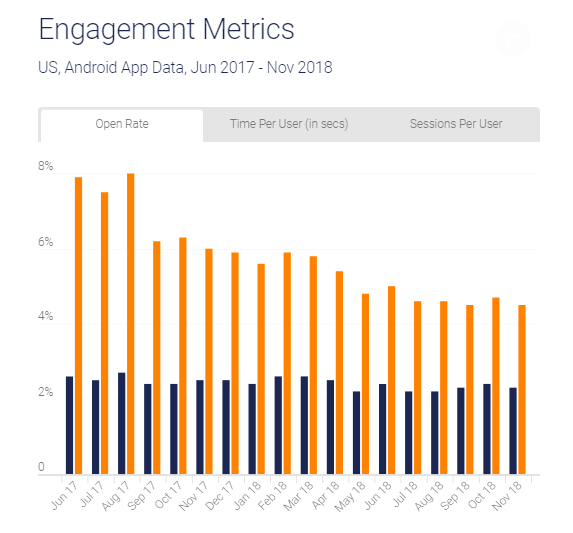
In the month of November, 2018, Lyft’s open rate was 4.5%, while Uber’s was just 2.3% and this number is expected to increase in the same ratio as users are reporting that Uber app is now becoming less user-friendly.
Lyft’s app engagement rate can also be connected to the steady and wild utilization of referral marketing. The driver referral campaigns started by Lyft offer an alluring referral value. Simultaneously, it offers a lot higher sign-up rewards as well. This increases the engagement numerous folds.
Lyft doesn’t have any top on its referral incentives when compared with its rivals. This gives an incredible reason to its users for continuing to utilize the app, which thus pulls in elevated engagement rates.
Key Takeaway for Entrepreneurs
On account of higher application engagement rate percentage of Lyft users who additionally have Uber in their phones has hopped altogether in recent months, which could demonstrate Lyft is eating into Uber’s market share. So, the lesson that you should learn here is that if you want your users to consistently use your ride-hailing app – don’t forget to pay heeds to app engagement rate.
Also Read: How to Increase User Engagement And Reduce Churn Rate of Your Mobile App?
4. Uber vs Lyft: Vehicle Options
When taking a look at the battle between Uber and Lyft, one of the biggest factors that set the two services apart is the vehicle options available to passengers. Uber caters to business people and professionals and has a broad range of vehicles to choose from. Lyft, on the other hand, offers fewer vehicle options than Uber.
Here is an overview of vehicle option provided by Uber and Lyft:
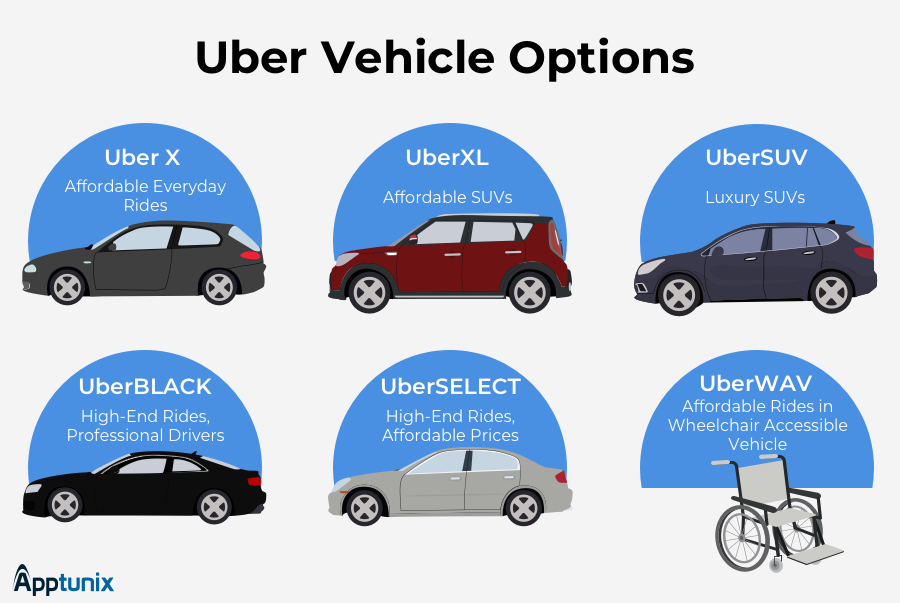
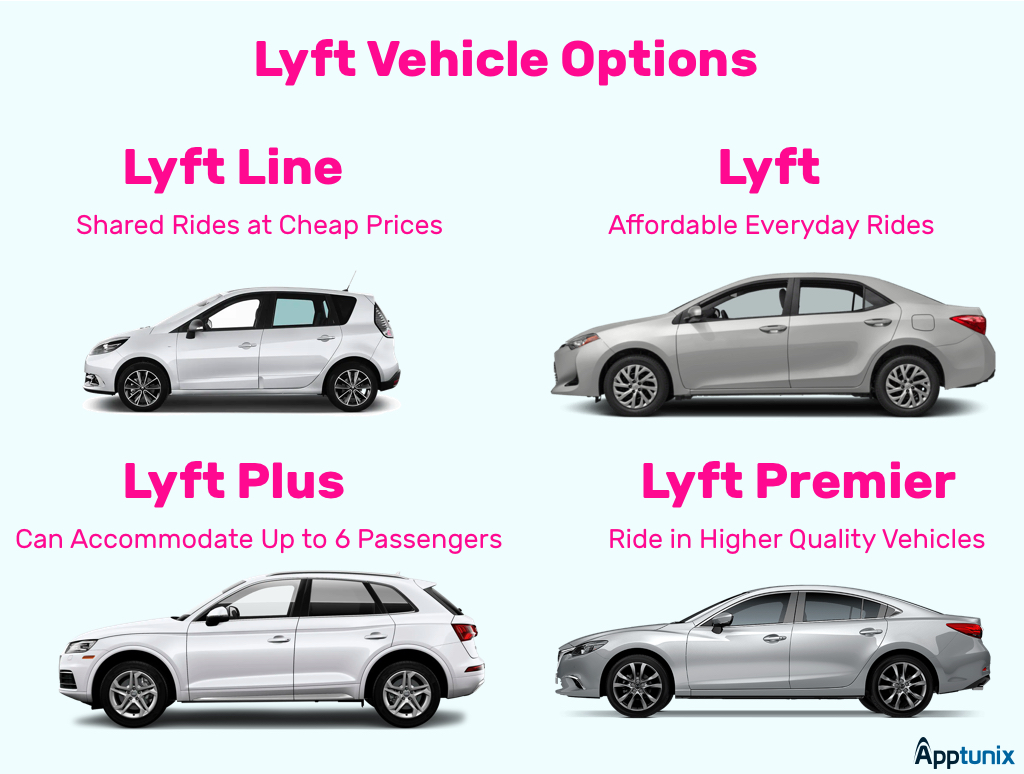
The Key Takeaway for Entrepreneurs
Uber and Lyft both add value to transportation by providing users with different options to move from one place to another. The main motive here is to provide users valuable options that ease their everyday travel needs.
5. Lyft vs Uber: Funding and Valuation
Using a whole lot of VC money and private equity – Uber has raised over $24B in funding over 22 rounds. Its investors include Silicon Valley stalwarts like Kleiner Perkins, Sequoia Capital, and Benchmark, and also the enterprises ranging from Microsoft to apparent competitors like GV and Didi Chuxing.
On the other hand, lyft has raised a total of $4.9B in funding over 19 rounds. Their most recent funding was raised on Jun 28, 2018 from a Series I round. Here is a graphical representation of funding received by both companies to date:
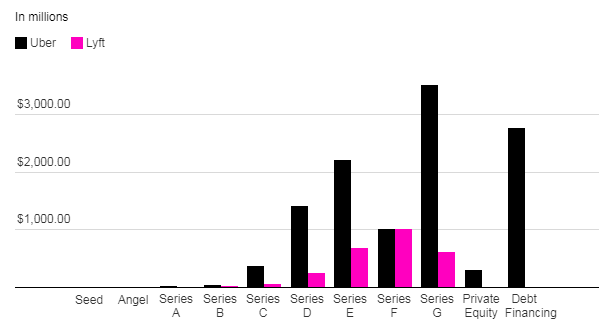
According to Techcrunch, Lyft has brought $600 M in a Series I financing round drove by Fidelity Management and Research Company, pushing its valuation to $15.1 B. The organization’s worth has almost doubled in the last 1 year.
This being stated, the company counts many prominent backers in its investor base. Firms like Founders Fund, Andreessen Horowitz, and Mayfield Fund have all put resources into Lyft. The company also got some direct investment from a fund managed by the government – the Ontario Teachers’ Pension Plan.
Even though there is a lot of capital given to both Uber and Lyft in this ridesharing war, their operating losses keep on heaping up. Uber’s cash needs have been huge to the point that big sovereign assets from Qatar and Saudi Arabia are putting resources directly in its offerings. However, still, there are rumors of the company running in losses.
They both offer good quality vehicles and pooled, solo rides in a number of vehicles. To keep up with competing types of transportation like bicycles and bikes, Uber and Lyft rolled out last-mile transportation options of their own.
With regards to valuation, while Uber has not priced its IPO, there are news from a few sources that say the organization could be focusing on a $100 B valuation. Lyft is already having a whopping $16 B valuation. That said, it is clear that in spite of operating in fewer countries than Uber – Lyft’s valuation is also a big number.
Again, both these ride-hailing giants stand neck to neck with each other in terms of valuation and funding. But, the great thing to notice here is that both companies can afford to continue bearing losses because of their cash hoards which have been amassed through all of the above mentioned funding rounds.
The Key Takeaway for Entrepreneurs
What budding entrepreneurs can learn here is: If you are planning to enter the ride-hailing industry and want to make it as big as Uber and Lyft – you should not rely on your Net Revenue. Investors are the key to success if you want to make it as big as Uber or Lyft in the taxi industry.
Also Read: Why Hailo – an On Demand Taxi App with $100 Million in Funding Failed in the US
6. Uber vs Lyft: Market Share
While the idea of Uber originated in Paris in the year 2008, the company started its operations in San Francisco. That is also the place where Uber’s headquarters is located. Given that, I think it bodes well to take a gander at the US market share before we analyze any global data.
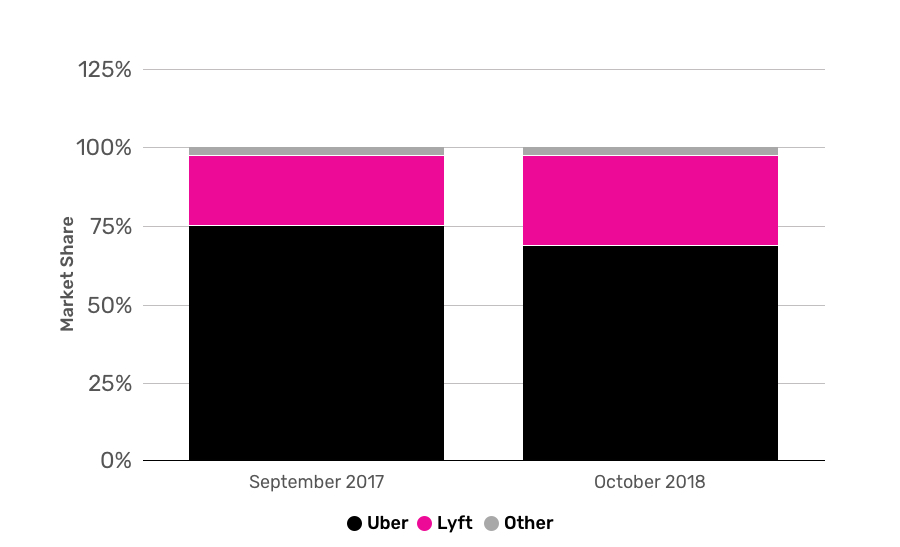
Based on the graphic alone, it is obvious that Uber controls the market share in the United States. However, all things considered, they aren’t poised for domination in the coming years. Let’s take a gander at the stats of the most recent two years. In 2017, Uber had a 74% market share in the US, compared to Lyft at 22%. In 2018, Uber controlled 69% of the market share while Lyft rose to 29%.
As should be obvious, Lyft is gradually but surely taking a percentage of the ride-sharing industry in the USA. However, the lion’s offer is as yet going to Uber.
The Key Takeaway for Entrepreneurs
While Uber had built up itself as the market leader, they didn’t have a lock on the market and the coming businesses. It’s nothing unexpected that competitors like Lyft would imitate their business and take away some share. Also, if Lyft can, anybody with a good strategy can.
Wrapping Up
Some battles never end. Same is the case here when talking about Lyft vs Uber – both of them have their own pros and cons. While Uber beats Lyft when talking about vehicle options, and innovation, Lyft wins on pricing, app engagement rate and revenues. In a nutshell, if you are planning to make an app like Uber or Lyft – we would suggest you to study the business model of both of them in detail and adopt their best strategies in your own Taxi App Business Model to rock the world.

Frequently Asked Questions(FAQs)
Q 1.Which Is Better Uber or Lyft?
Uber and Lyft – both services look the same – but aren’t. Uber’s business is expanded into many vertices while Lyft is centered around Taxi Booking. If you are an entrepreneur planning to make an app like Uber or Lyft, you can learn a lot from the strategies of both.
Q 2.Is Uber or Lyft Cheaper?
Well, the answer to this question varies from city to city – Lyft is considered to be cheaper. For longer trips, Uber charges more money as compared to Lyft as its per-minute cost is slightly higher. Also, Uber uses price surging technique while Lyft follows no such strategies.
Q 3.What is the Difference Between Uber and Lyft?
There are many differences between Uber and Lyft. While Uber is available in more than 70 countries Lyft’s availability is restricted to North America. Also, Uber’s business is expanded into a number of vertices where Lyft is just confined to transportation.
Q 4.How Much it Cost to Make an App Like Uber or Lyft?
It is a bit difficult to give a cost estimate for developing an app like Uber or Lyft as it depends on several factors like Platform you want to launch your app on, features you want to integrate and tech stack that you use. But to give you a rough estimate I can say that it would cost you somewhere around $30k – $40k with just the basic features.
Rate this article!
(12 ratings, average: 3.08 out of 5)
Join 60,000+ Subscribers
Get the weekly updates on the newest brand stories, business models and technology right in your inbox.

Humane yet subtle, Naiya is a girl full of ideas about almost everything. After earning a bachelor’s degree in computer science and engineering, she decided to merge her technical knowledge with her passion for writing – to accomplish something interesting with the fusion. Her write-ups are usually based on technology, mobile apps, and mobile development platforms to help people utilize the mobile world in an efficient way. Besides writing, you can find her making dance videos on Bollywood songs in a corner.

Telemedicine 2.0 - A Comprehensive Guide On What Healthcare Providers Need To Know?
Discover how the latest advancements like Artificial Intelligence in telemedicine are reshaping patient care. This comprehensive resource offers insights into the key trends and innovations driving this shift, providing valuable knowledge for healthcare professionals looking to stay ahead.
Download Now!